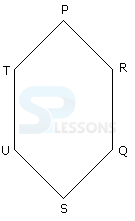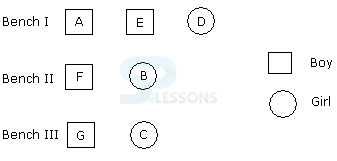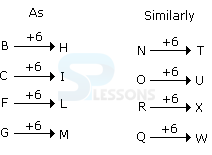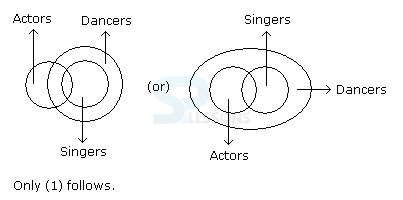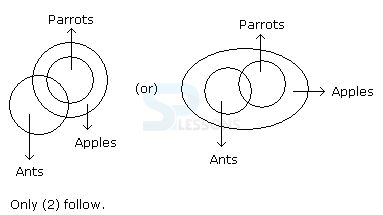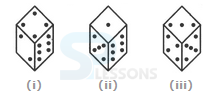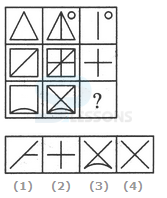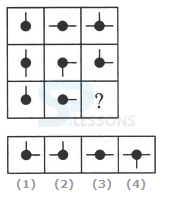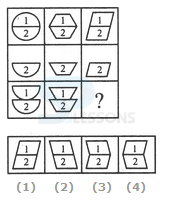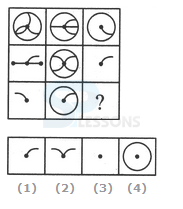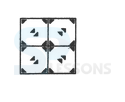 Introduction
Introduction
BITSAT 2020 – Entrance Examination, conducted in online Mode, has: a duration of 3 Hours and consists of 4 parts, namely – Physics, Chemistry, English Proficiency & Logical Reasoning and Mathematics/ Biology. The 4 sections are not separately timed and there is no break in between the sections. There is a Negative marking in BITSAT 2020 exam and 1 mark is deducted for each wrong answer. The below sections gives the detailed information about BITSAT Physics part.
 Pattern
Pattern
| Parts | Subject | No of Questions | Duration |
|---|---|---|---|
| Part I | Physics | 40 | 3 hours (Without break) |
| Part II | Chemistry | 40 | |
| Part III | (a) English Proficiency and | 15 | |
| (b) Logical Reasoing | 10 | ||
| Part IV | Mathematics or Bilogy (For B.Pharm candidates) | 45 | |
| Total | 150 | ||
Note:
There is no time limit for individual parts of the test. The candidate can go back and change any of his/her answers among the 150 questions.
If a candidate answers all the 150 questions (without skipping any question), the candidate will have an option of attempting 12 (twelve) extra questions, if there is still time left.
These extra questions will be from Physics, Chemistry, and Mathematics/ Biology only; four questions from each part. Further, once the candidate has opted for extra questions, he/ she cannot go back for correction of any of the earlier answered 150 questions.
 Syllabus
Syllabus
BITSAT 2020 Exam Syllabus
Note:
Each correct answer fetches 3 marks, while each incorrect answer has a penalty of 1 mark (-1mark). No marks are awarded for questions not attempted. While the candidate can skip a question, the computer will not allow the candidate to choose more than one option as correct answer. There will be 150 questions in all.
 Verbal
Verbal
1. Pointing to a photograph of a boy Suresh said, "He is the son of the only son of my mother." How is Suresh related to that boy?
- A. Brother
B. Uncle
C. Cousin
D. Father
- A. Q - N + M x P
B. P + S x N - Q
C. P - M + N x Q
D. Q - S % P
- A. Brother
B. Sister
C. Nephew
D. Cannot be determined
Note:Niece - A daughter of one's brother or sister, or of one's brother-in-law or sister-in-law. Nephew - A son of one's brother or sister, or of one's brother-in-law or sister-in-law.
4. Introducing a boy, a girl said, "He is the son of the daughter of the father of my uncle." How is the boy related to the girl?
- A. Brother
B. Nephew
C. Uncle
D. Son-in-law
- A. N β P - L + E - M
B. N - Y + A β M
C. M - Y * P - N
D. N β C + F * M
1. A, P, R, X, S, and Z are sitting in a row. S and Z are in the center. A and P are at the ends. R is sitting to the left of A. Who is to the right of P?
- A. A
B. X
C. S
D. Z
- A. Ambassador and Maruti
B. Maruti and Fiat
C. Fargo and Mercedes
D. Ambassador and Fargo
- A. U and P
B. T and R
C. U and R
D. U and R
- A. Between U and V
B. Second to the right of P
C. To the immediate right of W
D. Data inadequate.
- A. BAC
B. BFC
C. BCD
D. CDF
1. CUP : LIP :: BIRD : ?
- A. BUSH
B. GRASS
C. FOREST
D. BEAK
- A. Rain
B. Stream
C. Pool
D. Canal
- A. TXWU
B. TXUW
C. TUXW
D. TVWX
- A. Cheat
B. Act
C. Speak
D. Observe
- A. Chemist : Laboratory
B. Businessman : Office
C. Labour : Factory
D. Athlete : Olympics
In each of the following questions two statements are given and these statements are followed by two conclusions numbered (1) and (2). You have to take the given two statements to be true even if they seem to be at variance from commonly known facts. Read the conclusions and then decide which of the given conclusions logically follows from the two given statements, disregarding commonly known facts.
Give answer:
(A) If only (1) conclusion follows
(B) If only (2) conclusion follows
(C) If either (1) or (2) follows
(D) If neither (1) nor (2) follows and
(E) If both (1) and (2) follow.
1. Statements: Some actors are singers. All the singers are dancers.
Conclusions:
Some actors are dancers.
No singer is an actor.
- A. Only (1) conclusion follows
B. Only (2) conclusion follows
C. Either (1) or (2) follows
D.Neither (1) nor (2) follows
- A. Only (1) conclusion follows
B. Only (2) conclusion follows
C. Either (1) or (2) follows
D.Both (1) and (2) follow
- A. Only (1) conclusion follows
B.Only (2) conclusion follows
C.Either (1) or (2) follows
D.Neither (1) nor (2) follows
- A.Only (1) conclusion follows
B.Only (2) conclusion follows
C.Either (1) or (2) follows
D.Neither (1) nor (2) follows
- A.Only (1) conclusion follows
B.Both (1) and (2) follow
C.Only (2) conclusion follows
D.Neither (1) nor (2) follows
1. 120, 99, 80, 63, 48, ?
- A. 35
B. 38
C. 39
D. 40
- A. 58965
B. 65423
C. 89654
D. 96542
- A. 100
B. 104
C. 108
D. 120
- A. i m
B. m i
C. i n
D. j ,
- A. aaabb
B. ababb
C. babab
D. babba
1. Choose the word which is different from the rest.
- A. Chicken
B. Snake
C. Swan
D. Crocodile
- A. Censure
B. Admonish
C. Rebuke
D. Retrieve
- A. Veena
B. Sitar
C. Drum
D. Guitar
- A. Volume
B. Size
C. Large
D. Shape
- A. Gasoline
B. Methane
C. Asphalt
D. Diesel
1. The total of the ages of Amar, Akbar, and Anthony is 80 years. What was the total of their ages three years ago?
- A. 71 years
B. 72 years
C. 74 years
D. 77 years
- A. 25
B. 37
C. 54
D. 65
- A. 5
B. 7
C. 10
D. 12
- A. 12
B. 16
C. 18
D. 24
- A. Rs. 236
B. Rs. 240
C. Rs. 248
D. Rs. 252
1. In a certain code, IMTITJU is written as TMIIUJT. How is TEMREMP written in that code?
- A. METERPM
B. METRPME
C. ETRMMEP
D. MTERPME
- A. UTEPMOCR
B. MOCPETUR
C. ETUPMOCR
D. PMOCRETU
- A. SBQHOHOF
B. UQBOHIOF
C. UBQHOHOI
D. UQBHOHOF
- A. CHRONRD
B. EJTQPTG
C. CHRPNRD
D. EJTQPTF
- A. DPNCBX
B. CPNCBZ
C. DPNCBX
D. DPNCBZ
Directions (1-5) In each of the following problems, there is one question and three statements I, II and III given below the question. You have to decide whether the data given in the statements are sufficient to answer the question. Read all the statements carefully and find which of the statements is/are sufficient to answer the given question. Choose the correct alternative in each question.
1. Question: What is Suman's rank from the top in a class of forty students?
Statements:
1. Suman is 3 ranks below Deepak from the top.
2. Deepak's rank from the bottom is 23.
3. Suman is 3 ranks above Deepak from the bottom.
- A. Any two of the three
B. Only I and II
C. Only I and II
D. Only II and either I or III
- A. Only I and II
B. Only II and III
C. Only I and III
D. All I, II and III
- A. Only I and II
B. Only II and III
C. All I, II and III
D. Only I and either II or III
- A.Only I and II
B.Only II and III
C.Only I and III
D.All I, II and III
- A. Only I
B. Only I and II
C. Only II and III
D. Only I and III
 Non-Verbal
Non-Verbal
1. Find out the alternative figure which contains figure (X) as its part.
- A. 1
B. 2
C. 3
D. 4
- A. 1
B. 2
C. 3
D. 4
- A. 1
B. 2
C. 3
D. 4
- A. 1
B. 2
C. 3
D. 4
- A. 1
B. 2
C. 3
D. 4
1. How many dots lie opposite to the face having three dots, when the given figure is folded to form a cube?
- A. 2
B. 4
C. 5
D. 6
- A. 1 and 2 only
B. 2 and 3 only
C. 2 and 4 only
D. 1, 2, 3 and 4
- A. 2
B. 3
C. 6
D. Cannot be determined
- A. 1
B. 3
C. 5
D. 6
- A. Fig.1
B. Fig.2
C. Fig.3
D. Fig.4
1. Choose the figure which is different from the rest.
- A. 1
B. 2
C. 3
D. 4
- A. 1
B. 2
C. 3
D. 4
- A. 1
B. 2
C. 3
D. 4
- A. 1
B. 2
C. 3
D. 4
- A. 1
B. 2
C. 3
D. 4
1. Choose the correct mirror image of the given figure (X) from amongst the four alternatives.
- A. 1
B. 2
C. 3
D. 4
- A. 1
B. 2
C. 3
D. 4
- A. 1
B. 2
C. 3
D. 4
- A. 1
B. 2
C. 3
D. 4
- A. 1
B. 2
C. 3
D. 4
1. Select a suitable figure from the four alternatives that would complete the figure matrix.
- A. 1
B. 2
C. 3
D. 4
- A. 1
B. 2
C. 3
D. 4
- A. 1
B. 2
C. 3
D. 4
- A. 1
B. 2
C. 3
D. 4
- A. 1
B. 2
C. 3
D. 4
1. Identify the figure that completes the pattern.
- A. 1
B. 2
C. 3
D. 4
- A. 1
B. 2
C. 3
D. 4
- A. 1
B. 2
C. 3
D. 4
- A. 1
B. 2
C. 3
D. 4
- A. 1
B. 2
C. 3
D. 4






